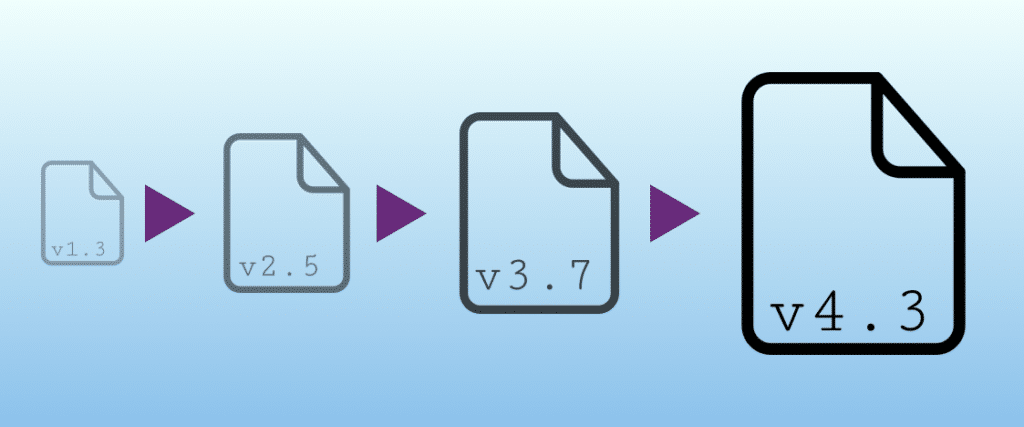
Version Control Best Practices for Efficient Software Development
- Arunabh Satpathy
- August 21, 2023
- 6 minutes
Version control in an ALM tool helps manage and track different versions of software packages. By following version control best practices, your developers can work collaboratively on a project while tracking important changes and data.
To make the most out of version control, PMs must follow best practices to optimize their software development processes. Version control done well gives teams a complete long-term change history, branching, merging, and trace management abilities.
This post covers the benefits of version control, best practices, and the tools best suited for high performing DevOps teams.
Related Articles
1. Differences between Versioning and Version Control
In casual conversation, these two terms are often used interchangeably, leading to confusion and ambiguity. But in software development, the two have distinct meanings:
Versioning: The broader process of managing versions of a software product, from public releases to granular source code-level changes to applications during development. It is broader than version control and is used to track different versions and changes over time.
Version Control: Focuses on efficiently managing source code changes during software development. It involves using best practices and tools to track, document, and collaborate on modifications to a software’s source code.
2. Benefits of Implementing Version Control
Why invest time in software version control? Because it enhances code quality, accelerates shipping processes, and enables faster iterations, surpassing previous capabilities.
Typically, developers code on their workstation and commit their code to a repository. Here, version control systems like Git manages code changes, branches, and merges to ensure collaboration and clarity.
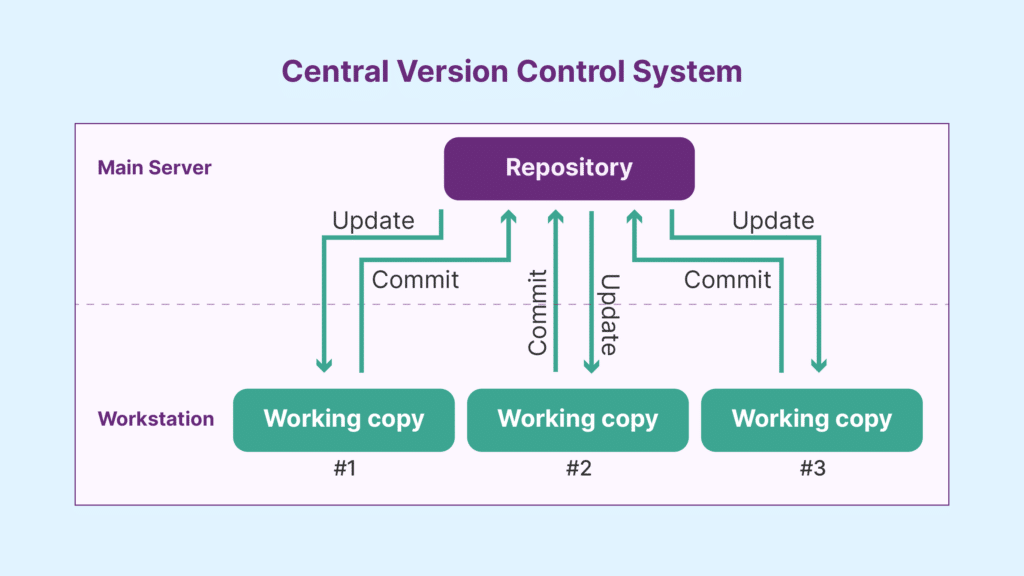
Enhanced collaboration and team efficiency
Development teams must keep track of changes made to the codebase, including new functions, features, and bug fixes. With faster development cycles, keeping track of code evolution is critical. Devs keep track of versions using various versioning schemes. For example, Semantic Versioning (SemVer) helps developers track applications, plugins, extensions and different software objects.
These days, code is updated to the cloud in varying instances of servers. In platforms like AWS, versioning helps developers keep track of multiple variants of an object in a single storage bucket. When developing APIs, versioning helps smooth transitions, ensure backwards compatibility, and transparently manage changes to an API communicate those changes to users.
Version control also helps teams resolve and prevent conflicts, even when people make changes at the same time.
Improved code quality and stability
Version control gives developers a safety net by letting them view and manage changes to code over time. If there is a mistake in a release, coders can turn the clock back and restore earlier code. This leads to more stable and higher quality code. Git is the most popular version control software for developers.
Traceability and accountability.
Version control helps with traceability by tracking all changes in source code during the development process and the order in which the changes occurred. It gives teams historical information on any changes to the source code and why they made changes to the codebase. This tracking helps teams work together and ship on time.
But before shipping, teams need to ensure that all the requirements defined for a system are tested. A Requirement Traceability Matrix (RTM) helps developers trace that their code meets the original business objectives. RTMs can also help teams create test scripts to validate code before shipping.
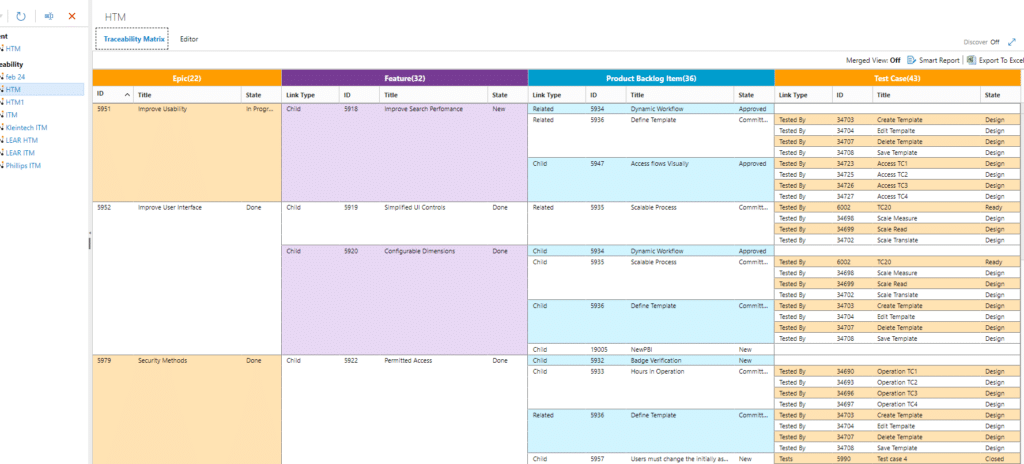
3. Version Control Best Practices
With all the benefits that version control brings to teams, it is necessary to adopt certain practices to maximize them. Most high-performing software and DevOps teams adhere to some version control best practices including:
Version numbers
Version numbers help teams keep track of which version of the software or hardware they are working on or are planning on releasing. They helpyou unambiguously identify different software versions, so that teams can communicate and collaborate effectively.
Version numbering has several different conventions, including semantic versioning, which follows the Major.Minor.Patch format. So, if you are releasing the third bug fix of the fourth minor revision of V6 in your software development cycle, you are releasing Version 4.7.6. 6.4.3?
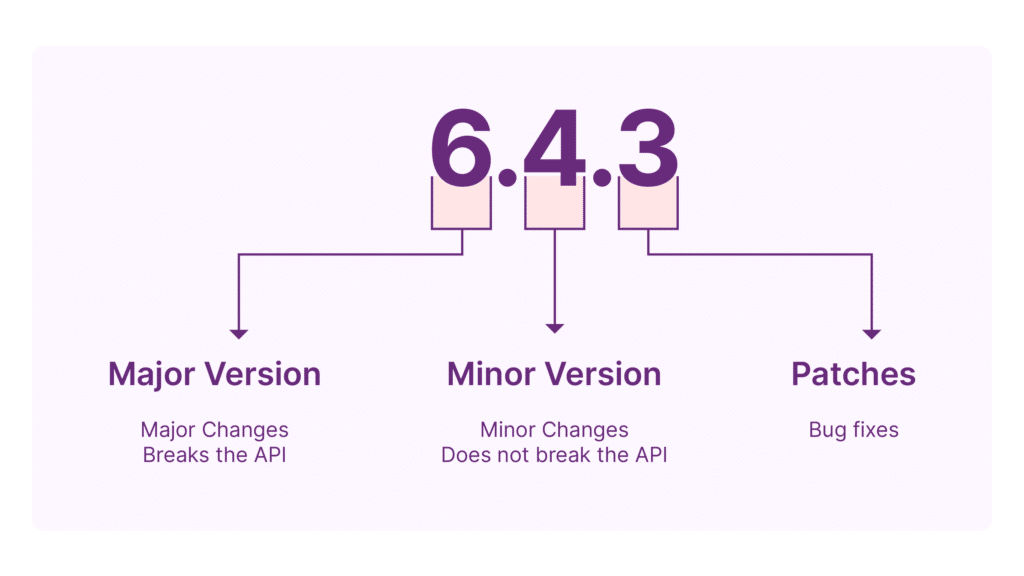
Central repository for managing and storing
Code fragments scattered in different areas are a recipe for disaster. Therefore, teams should use a central repository to manage and store code in one place. Repos make it easier for teams to collaborate and keep track of changes. A version control system like Git or Subversion helps teams store, track, and manage code branches and merge within the central repository.
Branching and merging strategies for simultaneous version development
For most complex organizations and software, there are developers working on different versions of the code at the same time. In these situations, branching and merging strategies help teams work on those versions simultaneously without disrupting each other’s work or code integrity.
With effective strategies, a team can work on new features, bug fixes, experiments, and integrations at the same time without conflict. They can also isolate changes and issues without affecting the live product. Once the branched work is complete, developers can merge the changes back into the main branch.
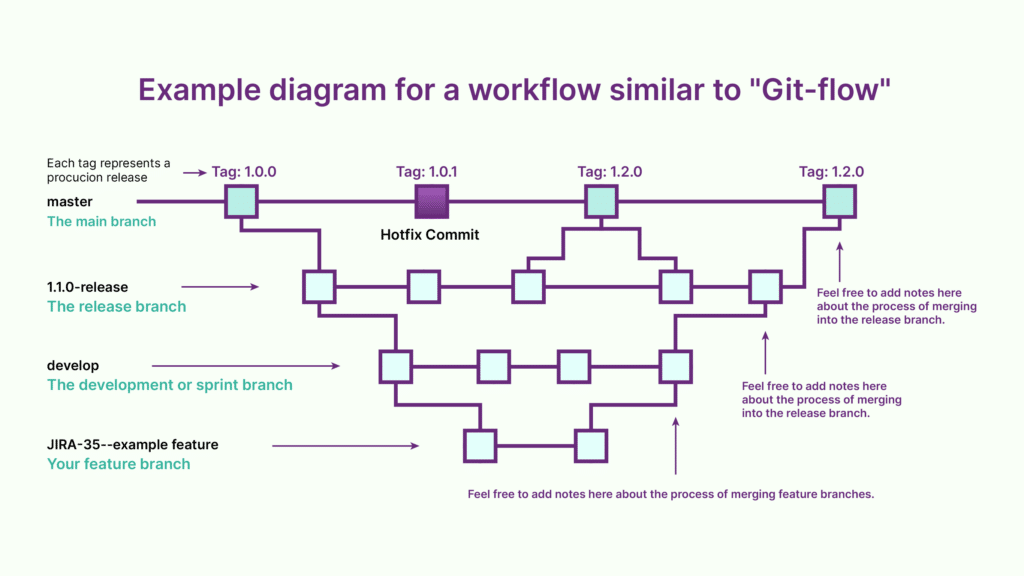
Common branching strategies include feature branching, release branching, and Gitflow.
Good documentation and commit tags/messages
With massive codebases and millions of lines of code, good documentation is crucial to help developers keep track of their software development tasks at any time. According to Github, well-documented codebases help make developers 55% more productive. Other benefits include increased confidence, saved time, and standardized communication.
Additionally, comprehensive requirements documentation communicates project structure, changes, and the relationships between workflows. Taken together, teams can collaborate more efficiently, review code, and ultimately ship code faster.
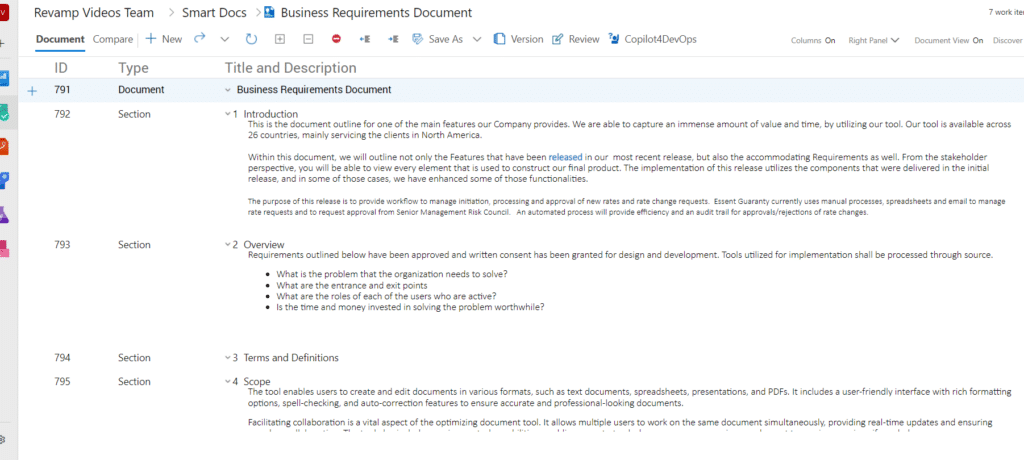
Finally, following best practices for clear and concise commit messages is an important part of good version management. For example, developers should use short and descriptive subject lines, start with a capitalized verb, and limit lines to 72 characters.

Security and Intellectual Property
Any software your company develops is intellectual property potentially worth millions, like product designs, documentation, and business files. Your organization’s version control practices are also a point of vulnerability which you should plug with:
- Backup and Failover: If there are any hardware failures or other emergencies, backing up and establishing failover mechanism of your version control systems is important.
- Access Control: Define user roles and permissions based on your trust hierarchy to stop unauthorized access to secure code.
In early 2019, a NASA web app that uses JIRA server accidentally exposed sensitive information like employee personal data and project information. An engineer traced it to the wrong permission settings.

- Activity Visibility: Tracking user activity within your version control system can help you identify suspicious behavior and potential security incidents.
4. Consequences of Bad Version Control
Poor version management can literally cost millions. In 2012, Knight Capital Group was the largest U.S. equity trading company, averaging more than 3.3 billion trades a day. Part of their trading was done through automated software.
In August 2012, they manually deployed a new component related to the Retail Liquidity Program. However, the engineer responsible for manual deployment mistakenly omitted copying the new code to one server, which left it with the old code instead. Knight didn’t have a second engineer, or a version management system, or written procedures for code reviews.
The faulty code led to the triggering of a dormant algorithm called “Power Peg” that went on a buying spree, purchasing $7 billion worth of stocks in one hour. Knight Capital could not pay for the unintentional trades and lost $440 million.
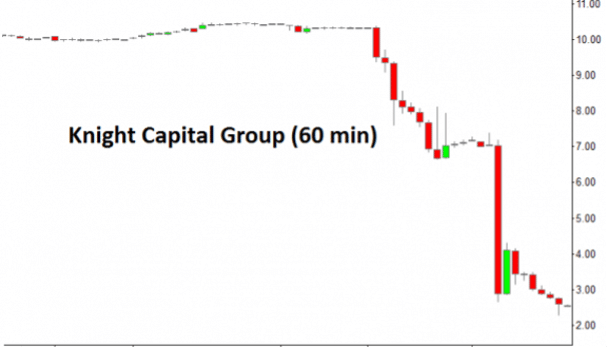
Among the measures Knight Capital should have taken were version control best practices and software development philosophies like DevOps. A version management system would have traced changes, helping the technician to prune dead code. A rollback feature to an earlier stable version of the software would also have helped stop the rampant trading.
5. Best Practices and the Right Tools
The Knight Capital Group incident demonstrated how version control done poorly can be catastrophic for a company. Fortunately, many companies have since learned to incorporate best practices like the ones outlined above.
A crucial second component to version control is the tools at your disposal; modern version and variant management tools allied to full-featured application lifecycle management software.
Combining these two, your software development teams can collaborate, track changes, and ensure code quality and stability. Great products lead to happy customers and greater revenue for your firm.


